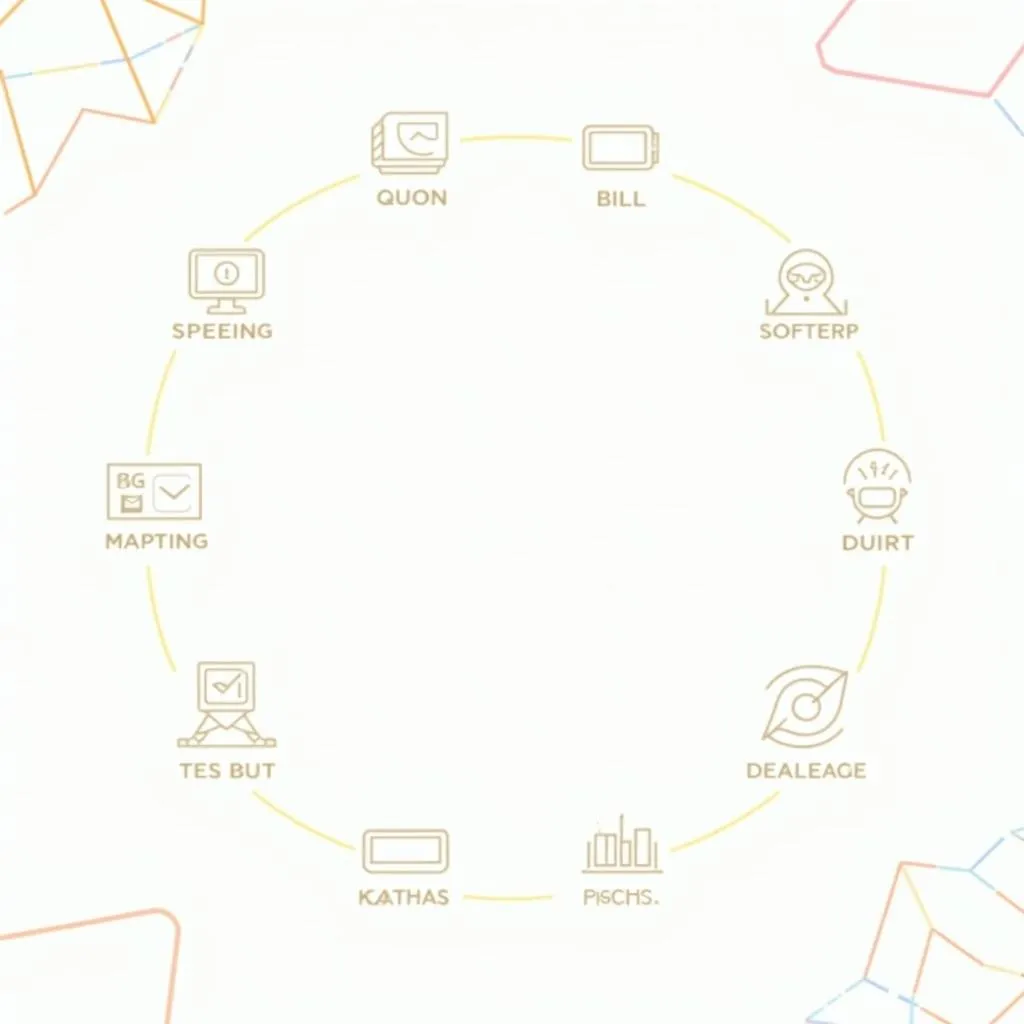The topic of remote learning as a permanent option in education systems has become increasingly relevant in recent years, especially due to the global pandemic. This subject has appeared in various forms in past IELTS exams and is likely to continue being a popular topic in future tests. Let’s examine a real IELTS Writing Task 2 question related to this theme and explore sample essays for different band scores.
Some people think that remote learning should become a permanent option in education systems. To what extent do you agree or disagree?
Analyzing the Question
This question asks for your opinion on whether remote learning should be a permanent feature of education systems. It’s important to note that the question uses the phrase “to what extent,” which means you should discuss how much you agree or disagree with the statement. You can either fully agree, partially agree, or completely disagree, but you must explain your position clearly and provide supporting reasons and examples.
Sample Essay 1 (Band 8-9)
Remote learning has emerged as a viable alternative to traditional classroom education, particularly in light of recent global events. While I believe that remote learning should indeed become a permanent option in education systems, I also think its implementation should be carefully considered and balanced with in-person learning opportunities.
There are several compelling reasons why remote learning should be integrated as a permanent feature of education systems. Firstly, it offers unparalleled flexibility and accessibility. Students who live in remote areas, have mobility issues, or face other barriers to attending physical classes can now access quality education from anywhere. This democratization of education has the potential to reduce inequality and provide opportunities to those who might otherwise be excluded from traditional learning environments.
Moreover, remote learning can be more cost-effective for both educational institutions and students. It eliminates the need for physical infrastructure and reduces associated costs such as transportation and accommodation. This could potentially lead to lower tuition fees and make education more affordable for a wider range of students. Additionally, the integration of technology in remote learning can enhance the learning experience by providing access to a wealth of online resources and interactive tools that may not be available in traditional classrooms.
However, it is crucial to acknowledge that remote learning should not entirely replace in-person education. The social aspects of learning, such as face-to-face interactions with peers and teachers, are vital for developing interpersonal skills and fostering a sense of community. Furthermore, certain subjects and skills may require hands-on practice or specialized equipment that cannot be easily replicated in a remote setting.
In conclusion, while I strongly support the inclusion of remote learning as a permanent option in education systems, I believe it should be implemented as part of a hybrid model. This approach would combine the benefits of remote learning with the irreplaceable aspects of in-person education, ultimately providing a more flexible, accessible, and comprehensive learning experience for students of all backgrounds and needs.
Word count: 318
 Remote learning in education systems
Remote learning in education systems
Sample Essay 2 (Band 6-7)
In recent years, remote learning has become more popular, especially because of the global pandemic. Some people think it should be a permanent part of education systems. I partially agree with this idea, as there are both advantages and disadvantages to consider.
On the one hand, remote learning offers several benefits. Firstly, it provides flexibility for students who may have difficulties attending physical classes due to distance or other commitments. For example, working adults can pursue further education without having to quit their jobs. Secondly, it can be more cost-effective, as it reduces expenses related to transportation and physical infrastructure. This could make education more affordable and accessible to a wider range of people.
However, there are also drawbacks to relying solely on remote learning. One major issue is the lack of face-to-face interaction with teachers and classmates. This can negatively impact the development of social skills and the sense of community that is often formed in traditional classroom settings. Additionally, some subjects, particularly those requiring practical skills or specialized equipment, may be challenging to teach effectively through remote means.
Furthermore, not all students have equal access to the technology and internet connectivity required for remote learning. This digital divide could potentially widen the gap between those who can afford the necessary resources and those who cannot, leading to increased educational inequality.
In conclusion, while remote learning offers significant advantages in terms of flexibility and accessibility, it should not completely replace traditional in-person education. Instead, I believe that a balanced approach, incorporating both remote and face-to-face learning options, would be the most beneficial for education systems. This would allow students to enjoy the benefits of remote learning while still maintaining the valuable aspects of traditional classroom experiences.
Word count: 282
Sample Essay 3 (Band 5-6)
Nowadays, many people think remote learning should be a permanent option in education systems. I agree with this idea because it has many advantages, but there are also some problems to think about.
Remote learning is good because it is flexible. Students can study from home or anywhere they want. This is helpful for people who live far from school or have jobs. Also, it can save money because students don’t need to pay for transport or living in a different city. Another good thing is that students can use technology and learn new skills.
But remote learning also has some bad points. One big problem is that students don’t meet their teachers and friends face-to-face. This can make it hard to make friends and learn social skills. Also, some subjects are difficult to learn online, like science experiments or sports. Another problem is that not all students have good computers or internet at home, so they might have trouble studying.
In my opinion, remote learning should be an option, but not the only way to study. I think schools should offer both online and in-person classes. This way, students can choose what is best for them. Some classes can be online, and others can be in the classroom. This will help students get the benefits of both types of learning.
To conclude, remote learning has both good and bad points. It should be a choice in education systems, but not replace traditional classes completely. A mix of both online and in-person learning is the best solution for students.
Word count: 253
Explaining the Band Scores
Band 8-9 Essay Analysis
The high-scoring essay demonstrates several key features that contribute to its Band 8-9 rating:
-
Task Response: The essay fully addresses all parts of the task, presenting a clear position with a nuanced approach. It discusses both the benefits and limitations of remote learning, showing a balanced perspective.
-
Coherence and Cohesion: The essay is well-organized with clear progression throughout. It uses a variety of cohesive devices effectively (e.g., “Firstly,” “Moreover,” “However,” “In conclusion”) and maintains a logical flow of ideas.
-
Lexical Resource: The vocabulary used is sophisticated and precise (e.g., “unparalleled flexibility,” “democratization of education,” “cost-effective”). The essay demonstrates a wide range of vocabulary with very natural and sophisticated control of lexical features.
-
Grammatical Range and Accuracy: The essay uses a wide range of grammatical structures accurately and appropriately. It includes complex sentences and structures without noticeable errors.
-
Development of Ideas: Each main point is well-developed with relevant examples and explanations. The essay presents a comprehensive and well-balanced argument.
Band 6-7 Essay Analysis
The mid-range essay demonstrates features that place it in the Band 6-7 range:
-
Task Response: The essay addresses all parts of the task and presents a clear position, although the ideas are less fully developed compared to the Band 8-9 essay.
-
Coherence and Cohesion: The essay is generally well-organized, with clear overall progression. It uses some cohesive devices, but not always with complete accuracy or appropriateness.
-
Lexical Resource: The vocabulary used is generally appropriate and sufficient to discuss the topic. However, it lacks the sophistication and precision of the higher-band essay.
-
Grammatical Range and Accuracy: The essay uses a mix of simple and complex sentence structures. There are some errors, but they do not impede communication.
-
Development of Ideas: Main ideas are relevant and supported, but the level of detail and explanation is not as thorough as in the higher-band essay.
Band 5-6 Essay Analysis
The lower-scoring essay demonstrates features that place it in the Band 5-6 range:
-
Task Response: The essay addresses the task, but the position is not always clear, and some aspects are underdeveloped.
-
Coherence and Cohesion: There is a basic organizational structure, but coherence is sometimes faulty. The use of cohesive devices is limited and sometimes inaccurate.
-
Lexical Resource: The vocabulary is limited but generally adequate for the task. There is little variation in word choice, and some errors in word formation and spelling may be present.
-
Grammatical Range and Accuracy: The essay uses a limited range of structures. There are frequent grammatical errors, but the meaning is generally clear.
-
Development of Ideas: Some main ideas are present, but they are often underdeveloped or lack specific examples.
Key Vocabulary to Remember
-
Remote learning (noun): Education that takes place outside of a traditional classroom setting, typically online.
Pronunciation: /rɪˈməʊt ˈlɜːnɪŋ/ -
Flexibility (noun): The quality of being able to adapt or change easily.
Pronunciation: /ˌfleksəˈbɪləti/ -
Accessibility (noun): The quality of being able to be reached or entered.
Pronunciation: /əkˌsesəˈbɪləti/ -
Cost-effective (adjective): Providing good value for the amount of money spent.
Pronunciation: /kɒst ɪˈfektɪv/ -
Infrastructure (noun): The basic physical and organizational structures and facilities needed for the operation of a society or enterprise.
Pronunciation: /ˈɪnfrəstrʌktʃə/ -
Interpersonal skills (noun): The ability to communicate or interact well with other people.
Pronunciation: /ˌɪntəˈpɜːsənl skɪlz/ -
Hybrid model (noun): A combination of two different things, in this case, a mix of remote and in-person learning.
Pronunciation: /ˈhaɪbrɪd ˈmɒdl/ -
Digital divide (noun): The gap between those who have access to modern information and communications technology and those who do not.
Pronunciation: /ˈdɪdʒɪtl dɪˈvaɪd/ -
Face-to-face interaction (noun): Direct contact or communication between people in person.
Pronunciation: /feɪs tə feɪs ˌɪntərˈækʃn/ -
Democratization (noun): The action of making something accessible to everyone.
Pronunciation: /dɪˌmɒkrətaɪˈzeɪʃn/
 Key vocabulary for remote learning essay
Key vocabulary for remote learning essay
Conclusion
The topic of remote learning as a permanent option in education systems is likely to remain relevant in IELTS Writing Task 2. To prepare for this and similar topics, practice writing essays that discuss both the advantages and disadvantages of technological advancements in education. Consider exploring related themes such as the influence of technology on the economy and its impact on various aspects of society.
To further improve your writing skills, try crafting your own essay on this topic and share it in the comments section below. This exercise will help you apply the strategies and vocabulary discussed in this article, allowing you to receive feedback and refine your approach to IELTS Writing Task 2.


